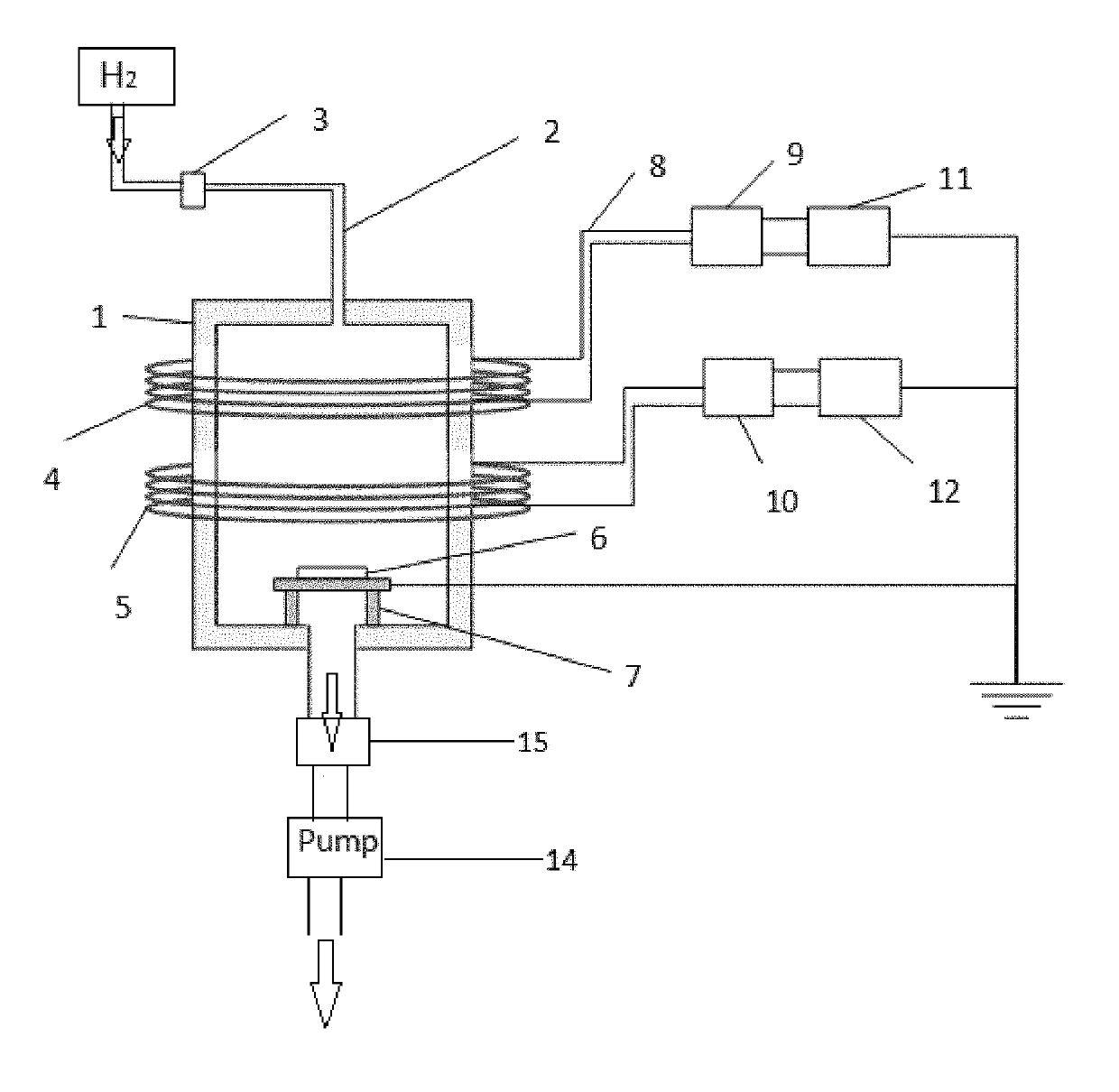Inductively Coupled Plasma For Hydrogenation of Type II Superlattices
a superlattice and inductive coupling technology, applied in the direction of climate sustainability, sustainable manufacturing/processing, electric discharge tubes, etc., can solve the problems of spatial noise, decrease the detectivity of photodiodes, and increase noise, and achieve easy scaling, high production throughput, and large area fpas
- Summary
- Abstract
- Description
- Claims
- Application Information
AI Technical Summary
Benefits of technology
Problems solved by technology
Method used
Image
Examples
Embodiment Construction
[0022]While this invention is susceptible of embodiment in many different forms, there are shown in the drawings, and will be described herein in detail, specific embodiments thereof with the understanding that the present disclosure is to be considered as an exemplification of the principles of the invention and is not intended to limit the invention to the specific embodiments illustrated.
[0023]The hydrogen passivation of defects in T2SL wafers, fully fabricated photodiodes and FPAs is performed using an ICP system operating at 13.56 MHz. An ICP process using only hydrogen gas (H2) has proven effective in generating the hydrogen passivant, maintaining the T2SL surface morphology and avoiding cross-contamination. ICP ensures a high plasma density, conferring a high density of atomic hydrogen at low operating pressures. The hydrogen species generated within the plasmas act as passivants. The plasma exposure typically takes place while the sample resides on a grounded electrode.
[0024...
PUM
 Login to View More
Login to View More Abstract
Description
Claims
Application Information
 Login to View More
Login to View More - R&D
- Intellectual Property
- Life Sciences
- Materials
- Tech Scout
- Unparalleled Data Quality
- Higher Quality Content
- 60% Fewer Hallucinations
Browse by: Latest US Patents, China's latest patents, Technical Efficacy Thesaurus, Application Domain, Technology Topic, Popular Technical Reports.
© 2025 PatSnap. All rights reserved.Legal|Privacy policy|Modern Slavery Act Transparency Statement|Sitemap|About US| Contact US: help@patsnap.com

